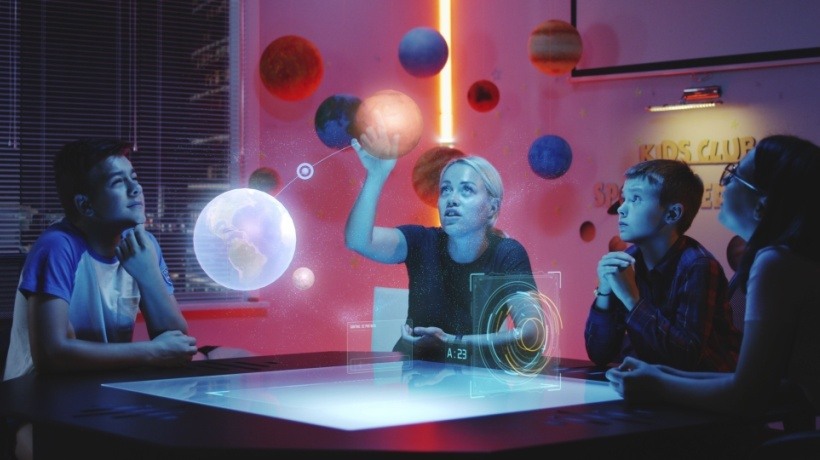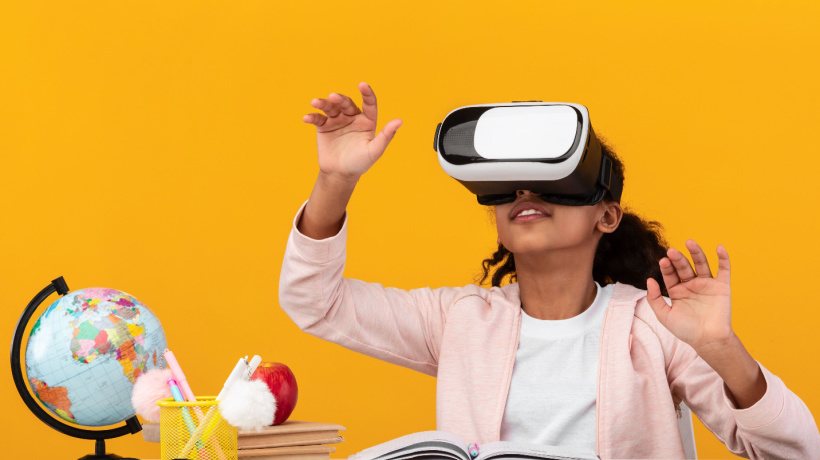Augmented Learning In Theory
Augmented learning is not necessarily a replacement for conventional eLearning content design – although it could potentially be. The idea behind augmented learning is to create supplemental learning modules, using rich media content, that simulate and interact with learners to further reinforce specific learning concepts.
One example of AL would be where Instructional Designers have created core content using text, graphics, and other online content to indoctrinate new nurses at a children’s hospital. Embedded within each module of the indoctrination course, say as a popup or sidebar, could be supplemental training material that augments some of the core content the nurses have already been exposed to – like “Click here to watch an emergency resuscitation procedure now”.
Some key ideas behind augmented learning include:
- Moving learners away from a culture of memorization, rote, and “cramming”.
- Encouraging “on demand” learning, as opposed to learning before the actual need to apply the new content arises.
- Producing short, interactive, digestible learning content to reinforce lengthier core training materials.
- Being aware that, to use augmented learning successfully, instructional content must be context-sensitive – making learning examples and simulated exercises more relevant to a specific learner and their environment, as opposed to producing generic content.
While just-in-time learning does bridge the gap between traditional classroom teaching and online learning, augmented learning fosters a culture of personalized, continuous learning to target specific areas of an individual’s learning needs.
6 Augmented Learning Use Cases
Now, let’s take a look at some of the augmented learning use cases.
- Industrial application.
In a factory that handles hazardous waste materials, there may be terabytes of online text, and reams of paper-based manuals and handbooks explaining special safety procedures for dangerous materials. Instructional designers can create short video clips or animated infographics to teach new employees how to react to specific situations – for instance a biological chemical leak. - Commercial use.
With the help of tools from Daqri, Instructional Designers can build content to help remote workers leverage the knowledge and skills of a small team of experts located at a central corporate site. As opposed to duplicating expensive skills (for instance, for precision spot-welding applications) at each remote site, consider using audio, video and telestration cues as part of an augmented learning package, to walk novice workers through complex processes on-demand. - Augmented shop-floor learning.
Workers on a busy shop floor are continually expected to learn on-the-go, and dynamically adapt to unique sets of challenges on the factory floor. By using tools from KMI Learning, Instructional Designers can creatively use RFID tags embedded/implanted at strategic locations on the shop floor (for example, on inventory bins, workstations, weighing machines etc.) to deliver customized learning content when a user with a mobile device passes within transmission range of the tags. - Classroom applications.
Instructional Designers working with students and teachers will find Explain Everything, a novel tool to use when developing content for homework or special project applications. With the help of this screen casting whiteboard application, you can quickly build interactive content, and serve it on demand for students and teachers. - Simulation for high-cost training.
Many learning environments use high-cost materials and equipment that may be one-time use applications. One example of that is using expensive sheet metal to teach learners how to use a new laser-cutting machine. The expensive sheets are rendered useless upon completion of a single training session. Instructional Designers could, therefore, build content using conventional Instructional Design concepts, and then, augment specific segments of the course with simulated (virtual) content to hone students’ skills. - Storytelling applications.
Many real-world learning experiences rely on telling stories or making presentations. By using tools like ZooBurst, Instructional Designers can produce 3D digital pop-up books, presentations, and other content that can help augment specific aspects of a training course.
All of the use cases discussed above have one common theme – they seek to enhance learners’ current knowledge. It is important to stress that augmented learning is not about developing brand new content. It is about supplementing content that has already been created using conventional eLearning approaches.
Practical Tips For Augmented Success
In all of the above learning situations, Instructional Designers build content by taking learning context (a particular situation, place, or learner) into consideration. Then, using eLearning tools, content creators can superimpose specific learning material into core teaching content.
eLearners today aren’t restricted to soaking up instructional content behind a desk, or in their home offices. They may choose to learn while at the gym using their smart phones, during lunch breaks using their tablets, or while on vacation using a laptop computer. A key element for successful augmented learning is, therefore, in its delivery.
The idea is that augmented content should be highly “responsive” in its construction, having the ability to dynamically “scale” to any device used for its delivery, whether a laptop, desktop or any other mobile or static device.
The Future Of Augmented Learning
Thus far, augmented learning applications have mainly been confined to supplementing core eLearning theory and concepts in a two-dimensional model. That’s all set to change! With rapid developments in Virtual Reality (VR), 3D content creation and Augmented Reality (AR), the world of eLearning, using augmented content, is set to explode.
A $2B injection by Facebook to acquire virtual reality application developer Oculus Rift, and ongoing developments by Google to its Google Glass platform, will give augmented learning students a life-like experience of their learning environment in 3D using AR and VR content. As a result, instructional designers will need to adapt their skills to produce content that supports these enhanced learning environments.
As you can see, Augmented Learning plays an important role in the creation of effective training solutions. If you want to learn more about creating videos, podcasts, or other interactivities for your training courses, please check out the Instructional Design for eLearning: Essential guide to creating successful eLearning courses book. This book is also available in Spanish. In addition, you may be interested in the Instructional Design for eLearning course.









